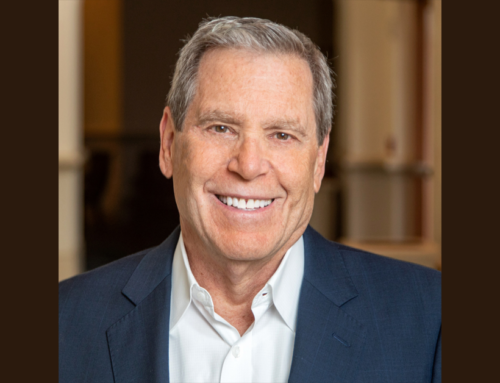RIA leaders are in a tricky position because they have to determine how to allocate their time between being a financial advisor and being the CEO of the firm. Without someone placing a strong emphasis on latter, your firm will stagnate.
Some RIA leaders, like past podcast guests Michael Chasnoff and Stephan Cassaday, are hugely successful financial advisors who are the CEOs of their respective firms, but have a strong president or Chief Operating Officer in place to handle much of the day-to-day activity of the firm. Other firms, like Wealth Enhancement Group, have hired a professional manager to be the CEO. Jeff Dekko, the CEO of Wealth Enhancement Group, describes how that works in my podcast with him.
In today’s post, I’ll examine how RIA leaders strike the right balance among all the activities competing for their time. In many respects, RIA leaders do it the same way that CEOs in any field do: by filling their calendars with the top-level activities critical to the success of the business that only the CEO can tackle.
To continue reading the rest of this post, please register below with your email address.
5 Key Time Allocations for RIA Leaders
After reading a recent Harvard Business Review (HBR) article on how CEOs manage their time by Michael E. Porter and Nitin Nohria, I was struck by how many of the key findings echoed advice from top RIA leaders I’ve talked to on my podcast, Between Now and Success.
Here are 5 key areas where RIA leaders allocate their time as they strive to maximize their impact.
1. Inspire top talent.
Michael Nathanson, the chairman, CEO, and president of multibillion dollar AUM RIA Colony Group, told me that the most important hat he wears isn’t one of the titles on his business card. It’s his role as CIO: “chief inspiration officer.”
“What’s the key to our success? It’s to attract, develop, engage and retain the best people in the business,” Michael says. “That only comes with inspiration.”
Keeping both your mind and your office door open to feedback and new ideas is an important part of keeping your staff aligned with your vision, especially if you’re working with millennials. An inspired workforce is one that you can trust to run your business on the ground floor while you’re focusing on the view from the top.
The folks who report directly to you are particularly important as you grow. The HBR article said that weak leadership teams can significantly reduce a CEO’s efficiency. Any time you have to spend cleaning up your underling’s mess is time you’re not spending being an effective CEO.
As an aside, let me state in no uncertain terms—if you want to have a great firm, you must hire the absolutely best people. Your firm should be stocked full with 9s and 10s on a scale of 1 to 10. If you’ve got 7s or even 8s in key roles, you need to upgrade–stat!
2. Develop a strong, consistent team culture.
Many advisory firms segment their clients into As, Bs, and Cs, and then provide different levels of service for each. National RIA firm Mariner Wealth Advisors takes a different approach. Founder and CEO Marty Bicknell told me that his clients are segmented by advisors, each of whom are specialized to work with a certain segment of client. Instead of one advisor having a mix of A, B, and C-level clients, Marty’s team provides the same all-star service for each client, no matter how big or small.
This is an example of what the HBR article calls “broad integrating mechanisms” – strong structures and processes that allow employees to operate at a high level without the CEO’s direct supervision.
The culture Marty has developed at Mariner gives him one less thing to worry about – he knows his advisors have been thoroughly trained and will deliver a consistent client experience across the board. And that culture also lets Marty engage in leadership activities that he finds fulfilling while developing next-generation talent that will be able to grow along with his vision for the company.
“Helping people understand what their unique ability is and helping people understand how to get from point A to point B is something I really enjoy doing,” Marty says. “I get a lot of satisfaction out of helping people accomplish things that they’re not sure they can accomplish.”
3. Stick to a schedule.
You probably didn’t need HBR to tell you this, but the CEO’s job really is all-consuming. 10-hour workdays are the norm, as is working on almost 80% of weekends. Yet, the most effective CEOs set limits. The study published in HBR found that away from the office, CEOs are strict about allocating time for family, and stick to exercising and sleep regiments that keep them rested and healthy.
That sense of structure can also make the long work hours more manageable.
United Capital founder and CEO Joe Duran says that he spends about one third of his day on internal/external communication, one third on idea creation and refinement, and one third on allocating resources and solving problems. Interestingly, he also told me that as his business scales, this time allotment doesn’t change very much.
I’ve found that when a CEO is feeling overwhelmed, it’s usually due to some combination of not delegating enough or having weak players on their team.
As Joe warned, “The more important you are to the business, the less valuable the business is.” Unlike the sun, you don’t want the company to revolve around you.
4. Hold yourself accountable.
You may have missed the news but HighTower Founder and CEO Elliot Weissbluth got fired last December. He’ll get fired this December too. Actually, it’s a very clever leadership strategy.
“Every December, I go through the process of terminating myself and then I rehire myself,” Elliot says. “I write in my journal what are the things I did that led to my termination and then what are the things that I, as the new CEO, will do differently.”
Elliot insists that his executive team go through the same exercise as well. It’s a way of pushing the reset button and giving yourself some objective distance between what you did last year and what you need to do next year to keep the business moving forward. Looking at that blank slate as you plan for your business’ next phase can be liberating and lead you to new ideas that will transform your business.
But maybe more important is the message that Elliot’s annual self-firing sends to the rest of his staff. While measuring and improving your processes is vital to any healthy business, the HBR article cautions CEOs not to become so involved in constant review that they lose valuable time getting bogged down in minor operational details better-suited to managers and COOs.
RIA leaders often turn to a coach who can help them determine the right balance between the proverbial working on the business and working in the business.
5. Spend Time in Self-Reflection
It’s easy for an RIA leader’s calendar to get mucked up with unnecessary meetings or other time wasters. Here’s a simple exercise my coaching clients go through as a way to make sure their calendar stays pure.
Take some time to review your calendar for the past month and take a critical look at how you’ve been spending your time. Ask yourself:
- What should I do more of?
- What should I do less of?
- What should I start doing?
- What should I stop doing?
A new calendar that revolves around your answers to these questions won’t just improve your business, it will improve your health, your happiness, and your life.
And while you’re at it, take these questions to the rest of your leadership team and ask them to answer the questions about you. You likely have some blind spots that they can point out. Take their feedback to heart and don’t get defensive.
The Rolling Stones sang, “Time is on my side, yes it is.” That’s only true if you are intentional about how you spend your time and use it wisely. If you don’t, then no amount of time will make up for your lack of thinking.
Resources
– ROL Advisor Put your client’s life at the center of the conversation, not their money.
– Values Clarification Toolkit Click here to download this FREE tool and start living your values.





